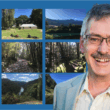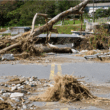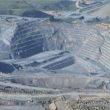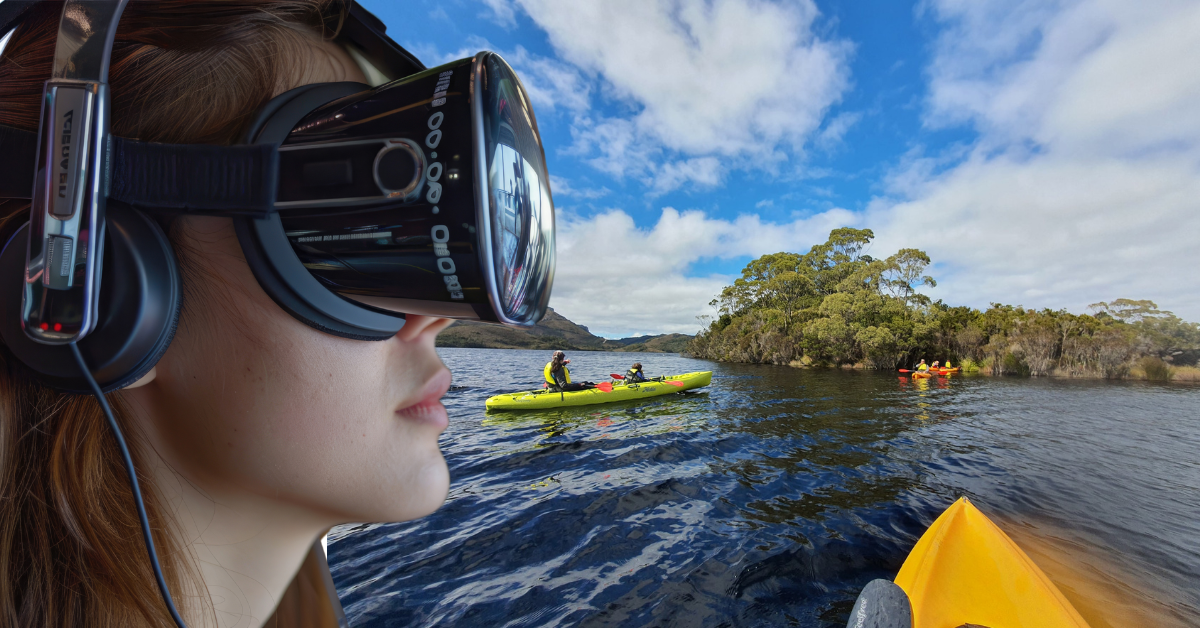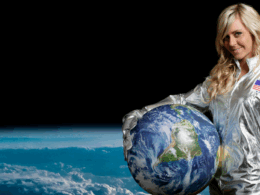Last week I attended the TIA Summit. It was a great event – really well organised – and a great opportunity to showcase the leading businesses in innovation and sustainability. It also showcased a few cases of ‘must do better’ and a yawning gap between the dominate industry players and the world leading innovation of small and medium businesses.
Reference
Tourism Industry Aotearoa (2024). Visitor Experience in a Changing World. White Paper (November 2024). https://www.tia.org.nz/assets/Visitor-Experience-in-a-Changing-World_TIA.pdf
Transcript
The TIA Summit is the annual industry conference and last week the 2024 Summit was hosted in Tamaki Makaurau Auckland. Tourism Industry Aotearoa is the peak tourism industry organisation in New Zealand and its annual conference is an important platform to explore the dynamics of the sector and the challenges and opportunities facing the industry. The Summit includes the annual tourism industry awards which is a stage to showcase the most innovative and dynamic tourism businesses in the country.
Widely regarded as tourism’s must-attend thought leadership event, The Tourism Summit is a key event on the annual tourism calendar, bringing together more than 300 business and industry leaders from around New Zealand. Planning and delivering a Summit of this scale is not to be underestimated. There is an enormous amount of work that goes in behind the scenes over many months to deliver an event like this. Hats off to Rebecca Ingram and her team who delivered this event, particularly those who I interacted with in advance including Bruce Bassett, Megan Sherborne, and Teearn Falconer all of whom were great to work with.
The theme for this year’s Summit was Visitor Experiences in a Changing World.
This theme recognises that the way visitors engage with destinations is constantly evolving and that it is important to explore the multifaceted aspects of visitor experience in an ever-changing tourism landscape. This was -in my view – a perfectly timed theme for the Summit given that since COVID-19 many visitors have become more attuned to engaging with distant places through virtual technologies, which has opened up new opportunities for experience delivery (including to people who are physically unable to visit distant or remote places in person), while also raising expectations on the part of tech-savvy visitors themselves.
The Summit featured the launch of a white paper titled ‘Visitor Experiences in a Changing World’ which Bruce Bassett produced to coincide with the Summit. Bruce is Chief Advisor for Strategy and Policy at TIA and has done a great job in developing this White Paper. He had interviewed our research team while preparing the draft and it was great to see some of the fruits of our discussions evident in the White Paper – particularly in relation to climate and changes in tourism, with reference to the important and comprehensive earlier work of the Aotearoa Circle.
So it was pleasing to see the industry facing rather than ignoring the challenges of climate change. As well as the implications for the tourism industry in terms of engagement of visitors with the natural and cultural contexts of the destination and visitor experiences. The White paper is well researched and referenced and provides really timely and valuable insights. It is now available on the TIA website and the link to the PDF is included at the end of the podcast transcript on my website.
One of the features of the Summit is a series of booths that were located in the expansive tea and lunch area immediately adjacent to the main conference room. The booths offered an excellent opportunity share insights to all of the Summit delegates who obviously spend a lot of time in immediate proximity to the booths between sessions.
Given the theme of the Summit this year we secured a booth for the purposes of our MBIE Endeavour research programme titled: He karapitipitinga mariko – Immersive regenerative tourism experiences in Aotearoa’. This research programme investigates tourism ‘between two worlds’ – namely the world of in-person, in-situ visitor experiences, the likes of which we have all experienced at the places that we have visited, and the world of virtual and augmented reality – the less but increasingly visited virtual world of technologies that offer phenomenal new visitor experience opportunities.
More of this in a later podcast – but for now let me just say that the opportunities for immersive experiences that are deeply engaged with the nature and culture of the places being visited, that lie at the intersection of these two worlds, is mindboggling. There is so much I want to tell you about our research programme into technologies and tourism but – as I said – this will have to wait for another podcast.
Needless to say, our booth dovetailed perfectly with the theme of the Summit. Several members of our research from Otago and Auckland arrived on Tuesday in the middle of the day to set up our booth, in advance of the Summit on Wednesday. Our booth included the demonstration of technologies that have been developed in the first year of the research programme.
One of our demos was run by Lily Eagan, a Masters student in Science Communication at Otago, who had developed a fully immersive virtual experience of kayaking in the Okarito Lagoon, on the West Coast of the South Island, with full autonomy of the visitor to interact with the tour guide – quite mindboggling in terms of pushing the boundaries of autonomous virtual engagements with nature. We also demonstrated augmented technologies that allowed visitors to experience the world outside the conference venue in ways that facilitate learning about the location past, present and future on a hand-held device.
Our prime position adjacent to the tea/coffee queue was absolutely perfect for getting the attention of delegates who might step out of the queue to sit down with us and put on one of Lily’s VR head sets or be interested enough to come back later. My job was to mingle among delegates and introduce our research and draw their attention to the booth, then had over to Lily and the others to explain their technologies and guide them through their virtual and augmented experiences.
The responses of those who visited our booth were overwhelmingly positive, and discussions about possibilities followed. This was primarily an engagement and outreach exercise intended to raise awareness of our research, the technologies available and their possible applications, but it ended up being much more than that, with lots of animated discussions with very engaged industry people.
As to the Summit itself, I was really pleased that I was able to attend and listen to some of the speakers. The programme of speakers included some real gems but also some lost opportunities. Most notably, the Minister of Tourism Matt Doocey presented via a pre-recorded video. While he explained that he had other priorities in parliament on the day of the Summit I thought that this was really poor. The TIA Summit should be a standing item in the minister’s calendar. Being too busy was unacceptable in my view.
His video recording was full of the usual platitudes – things that may be true (or may have been true in the past) but had little or no meaning because it has been said so many times before. There were words of encouragement and the usual positive spin on tourism and its contribution to the New Zealand economy but little by way of vision or ambition for the future.
The same must be said about presentations from Jeremy O’Brien from Air New Zealand and Rene de Monchy from Tourism New Zealand.
Jeremy O’Brien spoke about the Air New Zealand passenger experience and how the airline is looking after passengers with new innovations such as a self-service booth for inflight snacks. It was interesting to hear about the costs and logistics of refitting a Dreamliner and the features of the new B787 cabin design. But what about the pressing issues facing Air New Zealand, such as its recent abandonment of its 2030 emissions targets? The important stuff was completely ignored. That was really disappointing but typical of the lack of acknowledgement and tendency to ignore the challenging stuff.
The same applied to Rene de Monchy from Tourism New Zealand. He spoke at length about the need for future growth and the scope for growth in the shoulder and low seasons, arguing that we have to target visitor growth across all four quarters of the year. Seasonality, needless to say, has been seen as a problem to be solved for decades – but it is all but impossible to dislodge or significantly disrupt established seasonal patterns of tourism for lots of obvious reasons that were completely ignored.
Undeterred, Tourism New Zealand wanted to send the message that New Zealand is a great place to visit at any time of year, full of activities that can be done year round. My mind recalled a cold day of bike riding on the Central Otago rail trail and the prospect of hypothermia cycling on that trail on a bad day of summer weather, let alone in the grips of winter.
Rene de Monchy urged the audience to always put a positive spin on climate change suggesting that as summers in Europe become hotter and more unpleasant perhaps people will choose to escape the heat of Europe to come to New Zealand in winter. He seemed to be trying to put a positive spin on an overheating planet. Oh dear.
That aside, I was disappointed that so much has been said in New Zealand tourism circles in the last four years about the need to pursue a ‘different’ tourism future. A lower carbon future, where domestic and short haul visitors are the primary target; where regenerative tourism principles guide and inform all aspects of experience delivery, and where immersive experiences add environmental and cultural capital to the visitor experience. I found it hard to believe that all of constructive discussion in recent years had fallen on completely deaf ears at Tourism New Zealand. Regenerative tourism wasn’t mentioned once by Rene de Monchy. Oh dear – again.
The lack of interaction or engagement, and absence of opportunities to ask questions and seek some accountability was frustrating although I realise that Summits like this are a platform for providing updates and insights rather than fostering discussion and debate. But somehow these industry leaders need to be made answerable and held to account.
Fortunately the afternoon sessions provide some gems that were the highlights for me. Two were standouts. One was titled: The magic of immersive story telling at Pounamu Pathway. This provided insights into the newly opened Pounamu Pathway – which provides immersive experiences created in partnership with the world famous Weta Workshop to bring cultural experiences to life through digital and immersive technology. Presented through a series of interpretation centres along the West Coast/Te Tai o Poutini, this was a brilliant example of collaboration between tourism and creative industries such as film making to create world class immersive experiences.
I found it hard to imagine such innovation 30 years ago when the Labour government advanced a transition from extraction to conservation and tourism on the remote West Coast. This was brilliant. What a way to experience the nature and culture of this unique and remote part of Aotearoa New Zealand. This was really inspiring.
The final presentation of the day, which was delivered by James Shaw – former Green MP and climate change minister during the previous government. The former minister did not shy away from the big challenges of sustainable tourism and climate change, although you could sense an unwillingness to listen in parts of the audience. It was in fact James Shaw who over many years urged the government to introduce the International Visitor Levy, despite constant resistance from the National and Act parties.
While the IVL was ultimately introduced it was compromised by a focus on both conservation and infrastructure – the original intention was that the IVL be committed solely to conservation management. The other obvious irony is that the current government – despite years of opposition to the IVL – has now jacked up the levy from $30 to $100 per visitor!
The fact that this was the last presentation of the day rather than the first said it all. This was a critically important talk in the context of the current challenges facing the industry – and should have framed the agenda rather than being scheduled when the day was all but over. Such a missed opportunity.
The social time was – as always – rich in opportunities to network but the format of presentations without the opportunity for questions, discussion and debate reduced the Summit to a showcase and glorification of the current practices and directions of the industry – rather than allowing for challenges to be addressed. Perhaps a one day Summit is not the place for discussion and debate, but that is a shame given that the industry is at a crossroads, facing many significant challenges, and those challenges were barely mentioned at all.
The Awards dinner for me was a highlight. Setting aside the dominant forces of the industry, the likes of Air New Zealand and Tourism New Zealand, the awards give recognition to tourism businesses themselves, regardless of size or resources, who are doing extraordinary things and delivering unique and world class visitor experiences. This is the coalface where immersive and regenerative experiences come to life, the likes of which we have been speaking about for some years now.
I have to give mention to some of the stand-out award winners.
The Tourism Micro-business excellence award was won by Terra and Tide which is a nature based eco-tourism business based on Waiheke Island. They offer a range of touring, walking, sailing and wellness experiences. Their commitment to actively conserving the island environment has led to numerous community projects and achieving Zero Carbon Business Operations Certification. The reach of this business and engagement of community and visitors in all aspects of sustainability and conservation were hugely impressive in terms of regenerative tourism outcomes.
The small-medium business excellence award was won by Te Pā Tū (Tauhara North Tourism). This business offers a premium experience sharing seasonal visitor experiences, enriched manaaki and provenanced kai. It has recently halved capacity, reduced CO2-e levels, increased yield, improved satisfaction ratings, unlocked new segments, created meaningful career-pathways and inspired industry through its transformative journey.
The Māori Tourism Award was won by the remarkable Kohutapu Lodge & Tribal Tours. This is a small Māori owned whānau business based in Murupara, in the remote Central North Island. It offers visitors authentic, engaging, real life experiences, such as guided tours into historic sites, community visits, powhiri on to their marae, traditional kai, and interactive cultural workshops.
The most inspiring aspect of this tourism business is that its central driving motivation is to reconnect whānau, particularly young men who may have left and moved into cities such as Auckland, to come home and reconnect with the whenua. The positive impact of this business on its community – helping people who are disconnected from their culture to reconnect – was inspiring.
The supreme award went to RealNZ (formerly Fiordland Travel). RealNZ provides authentic nature experiences in the South Island. Its purpose is to “help the world fall in love with conservation through extraordinary experiences in nature”. Since its founding in 1954 by conservation pioneers Les and Lady Olive Hutchins, RealNZ has maintained a rich heritage of fostering appreciation for New Zealand’s natural places, while working to regenerate ecosystems and protect Aotearoa’s natural treasures for future generations.
RealNZ was the big winner on the night. It also won the Large Business Excellent Award and Tourism Environment Award. All richly deserved.
****
I was pleased to attend the TIA Summit. It offered a great opportunity to see first-hand the inner workings of the tourism industry. There were many highlights. Some of the speakers and the award recipients underscored the enormous power of tourism, and the rich opportunities to do extraordinary things for communities, environments and cultures through tourism when done well. New Zealand tourism businesses remain world-leaders in this respect.
But the Summit did highlight the gulf between industry players – the likes of Tourism New Zealand and Air New Zealand – that are so wedded to the need for relentless growth – and tourism businesses, where vision and aspiration for regenerative tourism lies. If only the gap between the two could be closed!

